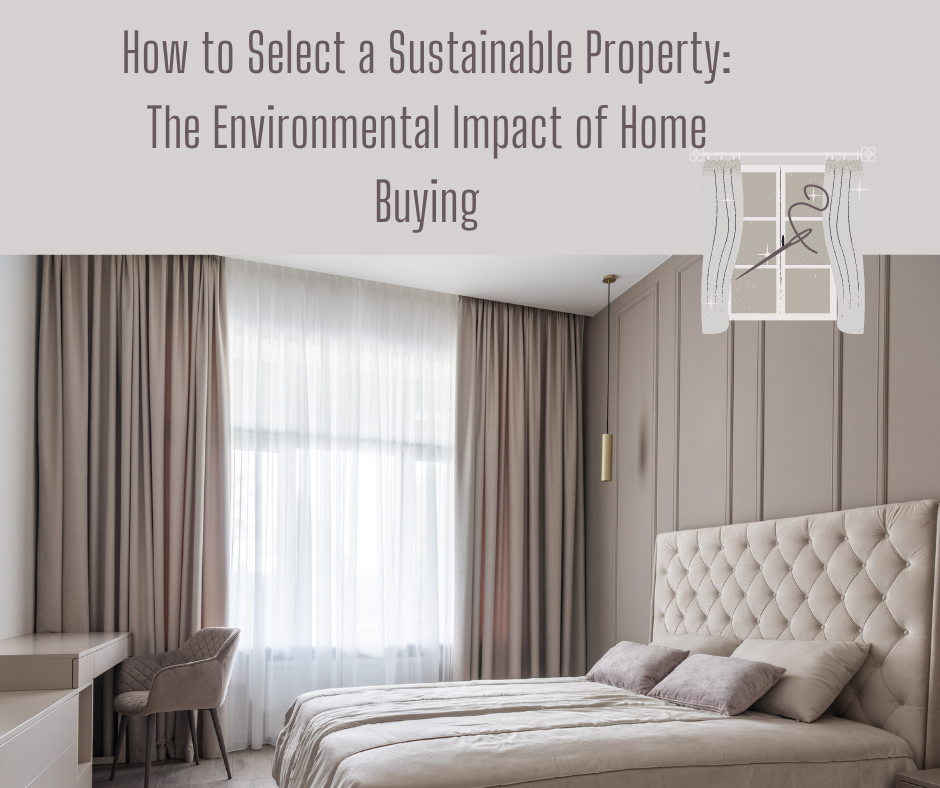When purchasing a home, many of us focus on factors like location, price, and size. However, as awareness of climate change and environmental issues grows, sustainability has become an essential consideration in the home-buying process. Choosing a sustainable property isn’t just a trend; it’s a responsible choice that aligns with global efforts to reduce carbon emissions and protect natural resources. Here’s how to make an environmentally conscious decision when buying your next home, incorporating the latest sustainability concepts and standards.
1. Redefining Sustainability in Real Estate
Sustainability in real estate now involves much more than just energy efficiency. It considers the entire lifecycle of a property—from the sourcing of materials and construction to its use and eventual renovation or demolition. Today’s sustainable homes are designed to minimize environmental impact, promote occupant health, and ensure long-term resilience.
Core Features of a Sustainable Property:
- Net-Zero Energy Homes: These homes are designed to generate as much energy as they consume, primarily through renewable sources like solar panels. The aim is to balance energy production with consumption, reducing dependence on external energy supplies.
- Passive House Standards: Originating from Germany, Passive House (Passivhaus) is a strict standard for energy efficiency in buildings. Homes built to this standard require minimal energy for heating and cooling due to superior insulation, airtight construction, and energy recovery ventilation.
- Sustainable Building Materials: Look for homes constructed with low-carbon materials like cross-laminated timber (CLT), recycled steel, or hempcrete. These materials reduce the carbon footprint of construction and enhance the home’s durability and energy efficiency.
- Biophilic Design: This design approach integrates natural elements into the home’s structure, improving well-being and reducing stress. Features like natural light, greenery, and organic materials enhance indoor air quality and create a more harmonious living environment.
2. The Importance of Location and Community
The sustainability of a property is also influenced by its location and the surrounding community. Opting for a home in a well-planned, eco-friendly community can significantly enhance your sustainable living experience.
Key Considerations for a Sustainable Location:
- Proximity to Public Transport and Amenities: Homes located near public transport options reduce the need for car travel, lowering carbon emissions. Being close to schools, shops, and workplaces also encourages walking or cycling, further reducing your environmental impact.
- Resilient Infrastructure: Sustainable communities often feature resilient infrastructure designed to withstand extreme weather, such as flood-resistant buildings and stormwater management systems. This not only protects the environment but also ensures the community’s long-term viability.
- Eco-Districts and Smart Cities: These are urban areas designed with sustainability at their core, often featuring integrated renewable energy systems, smart grids, waste-to-energy plants, and sustainable water management practices. Living in an eco-district means participating in a collective effort to reduce the overall environmental footprint.
3. The Significance of Green Certifications
Green certifications are valuable tools for identifying sustainable properties. These certifications have evolved to cover a wider range of sustainability criteria, ensuring that certified homes meet the latest environmental and energy efficiency standards.
Top Green Certifications:
- LEED for Homes (Leadership in Energy and Environmental Design): LEED certification has broadened to include criteria such as location and transportation, sustainable site development, and indoor environmental quality. LEED-certified homes are assessed on their overall sustainability, from construction practices to energy performance.
- WELL Building Standard: Focused on human health and well-being, the WELL standard includes criteria related to air, water, light, fitness, and mental health. Homes certified under WELL ensure that sustainability and human health are prioritized together.
- Living Building Challenge: This certification sets the bar higher than typical green building standards by requiring buildings to be net-positive in energy, water, and waste. Living Building Challenge-certified homes not only minimize harm but actively contribute to environmental regeneration.
4. Financial Benefits and Long-Term Value
While investing in a sustainable property might require a higher initial cost, the long-term benefits are substantial. Sustainable homes are designed to reduce ongoing expenses, improve occupant health, and maintain or increase property value over time.
Financial Advantages of Sustainable Homes:
- Lower Energy and Water Costs: Energy-efficient appliances, solar panels, and water-saving fixtures lead to significant savings on utility bills over time.
- Enhanced Property Value: As demand for sustainable homes increases, properties with green certifications and eco-friendly features tend to hold their value better and may appreciate more quickly than traditional homes.
- Government Incentives and Rebates: Many governments offer tax credits, rebates, and grants for energy-efficient upgrades, making sustainable homeownership more financially accessible.
5. Steps to Finding a Sustainable Property
Identifying a sustainable property requires careful research and attention to detail. Partnering with a real estate agent who specializes in green properties can be helpful. Additionally, using online resources dedicated to sustainable real estate can simplify your search.
Tips for Identifying a Sustainable Property:
- Research the Developer’s Background: Look for developers known for sustainable construction and a history of delivering eco-friendly homes.
- Examine the Property’s Energy Profile: Request an energy audit or review the home’s energy efficiency ratings. Homes with high energy ratings typically offer better insulation and lower energy consumption.
- Inspect Sustainable Features: When visiting a property, look for sustainability features such as solar panels, rainwater harvesting systems, energy-efficient windows, and non-toxic building materials.
6. Your Role in a Sustainable Future
Buying a sustainable home is a significant way to contribute to environmental conservation and combat climate change. Your choice reflects a commitment to living in harmony with nature and supporting global sustainability goals. As more homebuyers prioritize eco-friendly living, the demand for sustainable properties will grow, driving positive change in the real estate market and beyond.
The environmental impact of home buying is considerable, but by making informed, sustainable choices, you can significantly reduce your ecological footprint. From energy efficiency and sustainable materials to living in a green community, every decision you make as a homebuyer has the potential to positively impact the planet. By embracing the latest sustainability standards and concepts, you’re not just securing a comfortable, future-proof home—you’re helping to build a more sustainable future for generations to come.


